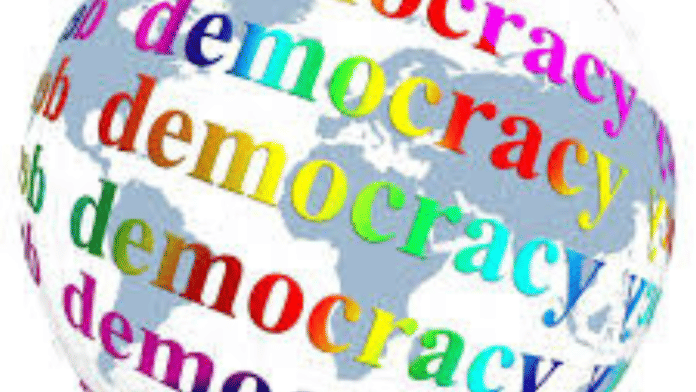Thank you dear subscribers, we are overwhelmed with your response.
Your Turn is a unique section from ThePrint featuring points of view from its subscribers. If you are a subscriber, have a point of view, please send it to us. If not, do subscribe here: https://theprint.in/subscribe/
The evaluation of democracy on a global scale is often skewed by the reliance on Western benchmarks, failing to account for India’s unique socio-political fabric. Agencies such as Freedom House, V-Dem, and The Economist Intelligence Unit apply parameters rooted in Western democratic models, emphasizing absolute freedom of speech and minimal state intervention. However, in a vast and diverse country like India, grappling with insurgencies, terrorism, and regional conflicts, such universal metrics produce misleading conclusions.
Unlike Western democracies, which evolved in largely homogenous societies, India must balance democratic rights with the imperative of maintaining stability and need for implementing affirmative actions. India’s approach highlights that national unity and social justice often take precedence over absolute individual freedoms when ensuring stability. This belief is reflected in policies prioritizing the collective over the individual, a principle cemented through the First Amendment to the Indian Constitution. Enacted to uphold zamindari abolition and reservation policies, this amendment laid the foundation for social justice by redistributing land and providing affirmative action for marginalized communities.
Similarly, the Preventive Detention Act (1950), designed to uphold national unity and integrity, paved the way for future anti-terror laws like the National Security Act (1980) and the Unlawful Activities (Prevention) Act (UAPA). These measures illustrate India’s distinct democratic evolution, prioritizing both security and inclusivity.
Successive Indian governments, irrespective of ideology, have adopted a two-pronged strategy to tackle insurgencies—firm countermeasures coupled with open doors for dialogue and reintegration. The transformation of Mizoram exemplifies this approach. The Northeast, long home to multiple ethnic insurgencies, has transitioned from military confrontations to development-driven peace. The Armed Forces (Special Powers) Act (AFSPA) (1958) granted sweeping powers to the military, but subsequent peace accords led to political integration. The Mizo National Front (MNF), once engaged in armed conflict, signed a peace accord in 1986, propelling its leader, Laldenga, from rebellion to the Chief Minister’s office. Similar transitions have occurred in Nagaland and Assam, where former separatists have embraced mainstream politics.
Punjab’s Khalistani movement in the 1980s followed a comparable trajectory. Initially framed as a demand for Sikh autonomy, the movement escalated into violent extremism. However, by the 1990s, it lost ground, and Punjab refocused on economic growth and political stability. Even the Shiromani Akali Dal (SAD), once aligned with the separatist cause, has distanced itself from such rhetoric.
In Jammu & Kashmir, a region long plagued by terrorism and anti-terror operations, democratic resurgence has been significant. The 2024 elections, the first held post-Article 370 abrogation, marked the revival of democratic governance. This demonstrated that India’s democratic framework is always willing to accommodate those who return to the constitutional fold.
Laws like UAPA and AFSPA underscore the ongoing tension between national security and civil liberties. Critics argue that while these laws help curb extremism, they also risk alienating specific communities, particularly in conflict-prone regions like Kashmir and the Northeast. The Terrorist and Disruptive Activities (Prevention) Act (TADA) (1985-1995) was repealed due to widespread misuse, but its core elements were later incorporated into new legislations. Following the 2008 Mumbai attacks, the National Investigation Agency (NIA) was established to proactively address terrorism, shifting from reactive measures to a more structured counterterrorism framework.
India’s democratic journey has been shaped by its leaders, each navigating the delicate balance between national security and democratic values. Jawaharlal Nehru laid the foundation, embedding civil liberties within the broader need for stability by introducing the First Amendment and AFSPA. Indira Gandhi’s tenure saw the controversial Emergency & Aizawl bombing of 1966, a drastic measure undertaken to quell the Mizo insurgency. Yet she also played a crucial role in Mizoram’s reintegration through the Shillong Accord.
Morarji Desai, India’s first non-Congress Prime Minister, restored democratic norms post-Emergency, while Rajiv Gandhi pursued reconciliation through the Punjab and Assam Accords. Simultaneously, he introduced TADA, expanding state power to counter terrorism. Atal Bihari Vajpayee balanced peace efforts in Nagaland and Kashmir with stringent counter-terror laws like POTA.
Manmohan Singh, a quiet but resolute statesman, steered India through security challenges post-2008 Mumbai attacks, creating the NIA while fostering peace talks with insurgents. Narendra Modi took decisive steps with the abrogation of Article 370 and facilitated the 2015 Naga Peace Accord, reinforcing India’s commitment to resolving conflicts through democratic means.
India’s democracy is not a mere imitation of Western models—it is an organic evolution shaped by the country’s vast diversity and socio-political intricacies. Its resilience is evident in how former rebels transition into lawmakers, how the nation continually integrates divided regions, and how democratic elections remain the ultimate test of legitimacy.
The nation’s greatest strength lies in its ability to reconcile, reintegrate, and reinvent democracy, ensuring a balance between security and justice. India is not just the largest democracy; it is a member of an exclusive club of 19 nations which have remained democratic since 1950. Of those, India is the only one in the lower-middle-income category. Its per capita income is a fraction of its peers. It has achieved something no other post-colonial nation has — it has sustained democracy.
These pieces are being published as they have been received – they have not been edited/fact-checked by ThePrint.


